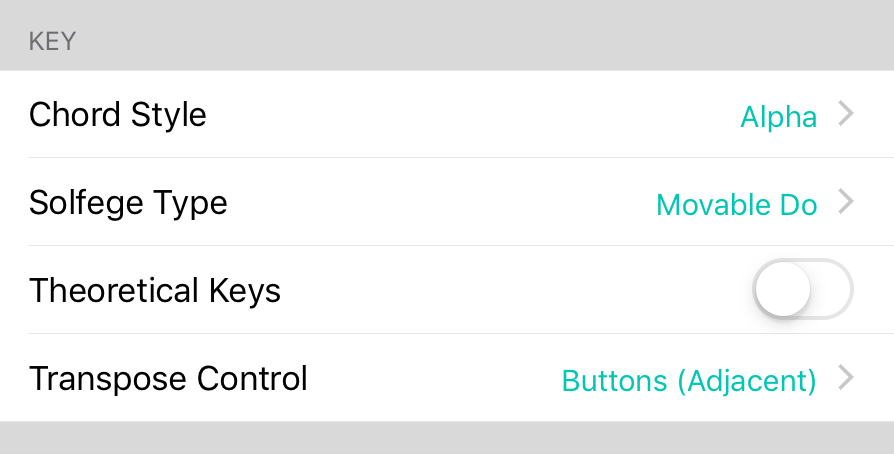User Manual
Key

The key section keys you adjust how the chords appear by default as well as how the key chooser works.
Chord Style
This allows you to choose the default chord style for newly imported songs. You can choose from:
- Alpha displays chords as an alphabetic character (A-G) including enharmonic preference (sharp or flat). Default.
- Nashville displays chords as numbers (1-7) based on their position in the key.
- Roman displays chords as Roman numerals (I, ii, iii, IV, V, vi, vii) based on their position in the key.
- Solfege displays chords as numbers using Latin (do, re, mi, fa, so, la, ti) based on their position in the key.
Solfege Type
When using the Solfege chord style (do, re, mi, ...) this determine how "do" aligns to the root chord of the key.
- Locked Do displays "do" as always aligning with the C note. For instance, if the song is in the key of D, the D chord displays as "re".
- Movable Do displays the "do" as the root chord of the key. For instance, if the song is in the key of D, the D chord displays as "do".
Theoretical Keys
The key chooser or slider contains the most common keys by default. If you would like to enable less commonly used keys, or keys that contain more than 7 sharps or flats, enable this setting. Default is off.
Transpose Control
Determines the user interface preference for key selection. Options include:
- Buttons (adjecent) displays keys that are adjacent to each other according to the circle of fifths. (Default)
- Buttons (chromatic) displays keys that are in chromatic/alphabetic order.
- Slider uses the original OnSong slider interface control.


